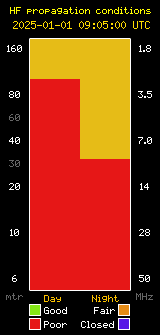The audio archive of this net can best be followed by downloading the .mp3 file for the appropriate date here and listening with the media player of your choice. You can move the progress slider forward or backward to the subject of interest to you.
We had another informative net tonight with 14 check-ins plus net control, Ken – KA6KEN and some chat room visitors! Tonight’s subjects included:
- How do you unlock the keypad on an AnyTone D868UV after loading the current “ham” firmware and whatever custom code plug you’ve loaded?
- After loading custom firmware and code plugs to DMR radios, what reference materials are there available to operate the radio? The factory manual is pretty much obsolete at that point.
- Are there plans to conduct classes / training on DMR at the SBARC Club station in the near future?
- What’s the best way to locate RFI interference in the 2 meter range with just an HT (or some signal detector)?
- How do you test coax with high swr to pinpoint the problem?
Tune in to the SBARC TM&E Net every Thursday at 8:00 PM local (2000 Hrs) and see what interesting questions will arise or ask some of your own! All club members and visitors are encouraged to check in to the net each week and join in with questions and /or answers to and contribute the knowledge of new and seasoned amateur radio operators alike.











